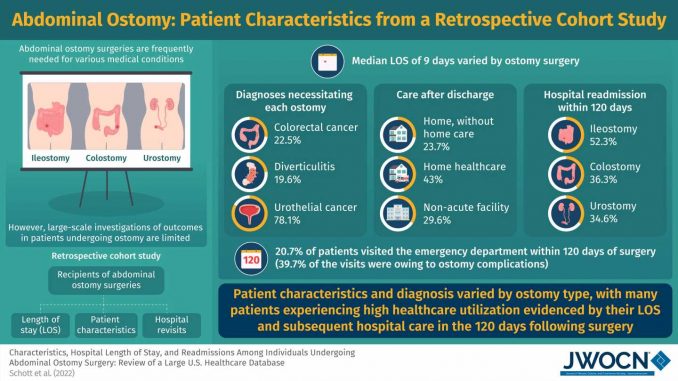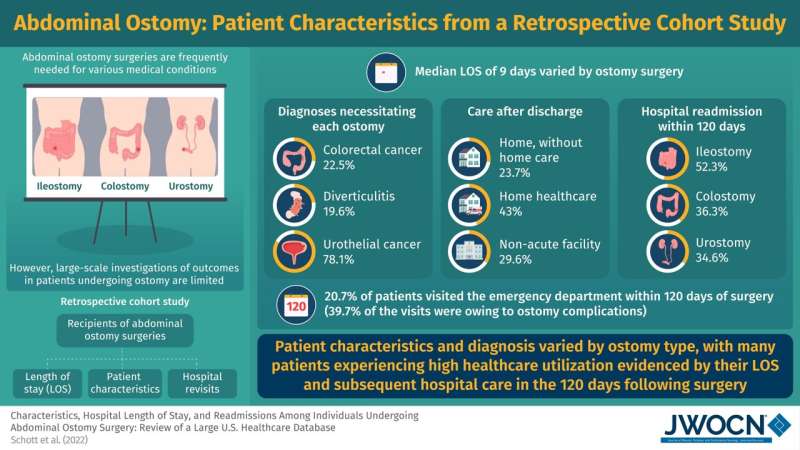

Patients undergoing abdominal surgery for ostomy placement have high rates of hospital readmissions and emergency department visits—often involving ostomy-related complications, reports a study in the November/December issue of the Journal of Wound, Ostomy and Continence Nursing.
“Our analysis of real-world, nationwide data shows the urgent need for efforts to improve the outcomes for patients undergoing abdominal stoma surgery, including patient-centered care and greater access to the services of wound, ostomy and continence [WOC] nurses or ostomy nurse specialists,” comments lead author Laura L. Schott, Ph.D., of PINC AI Applied Sciences (PAS), a division of PINC AI, the technology and services platform of Premier Inc.
Forty-two percent hospital readmission rate within 120 days after ostomy surgery
The researchers analyzed data on nearly 28,000 patients undergoing abdominal ostomy surgery in 2017-18, drawn from a large US hospital database. The study included approximately 15,500 patients undergoing creation of a colostomy, 10,000 undergoing construction of an ileostomy and 1,900 undergoing urostomy placement.
Colostomies and ileostomies are openings created in the abdominal wall to allow passage of stool from the large and small intestines, respectively. Urostomies are created to allow passage of urine from the bladder. Among the study patients, the most common reasons for colostomy or ileostomy were colorectal cancer, diverticulitis, and sepsis. Bladder cancer was the main reason for urostomy.
Patient characteristics varied among groups: about 71% of colostomy patients and 49% of ileostomy patients underwent emergency surgery, compared to 10% of urostomy patients. Patients stayed in the hospital for a median of seven days after their ostomy surgery. Patients undergoing colostomy or ileostomy spent more days in the hospital, potentially reflecting their higher rates of emergency and traditional open abdominal surgery.
The data showed high rates of healthcare use in the weeks and months after stoma surgery. Within 120 days after initial hospitalization, 42% of patients were readmitted to the hospital at least once. Patients undergoing ileostomy frequently had repeat hospitalizations: 52%, compared to 36% in the colostomy group and 35% in the urostomy group. Ostomy complications were the reason for rehospitalization in about 62% of patients.
Patient education and WOC nurse specialists could play key roles in improving outcomes after ostomy surgery
About 21% of patients had ED visits within 120 days after initial hospitalization—more common for colostomy or ileostomy patients, compared to urostomy patients. About 40% of ED visits were due to ostomy-related complications.
The findings are largely consistent with previous studies showing that patients undergoing ostomy surgery are acutely ill, require several days in the hospital, and have high rates of rehospitalization, subsequent ED visits, and complications requiring follow-up care.
“To address these issues, clinicians and hospital management should ensure patients receive the services of a WOC or ostomy nurse specialist, preoperative stoma marking, and post-discharge support programs that promote self-management skills and adjustment to life with an ostomy,” Dr. Schott and coauthors write. They note that about two-thirds of patients were discharged home from the hospital, with or without home health care—and thus may not have received care from a WOC nurse.
Source: Read Full Article